In 2003, when I was 33 years old, my mother died. Her body became overwhelmed quite suddenly by infection because of years of use of prednisone to treat the terrible pain and disability her rheumatoid arthritis caused her.
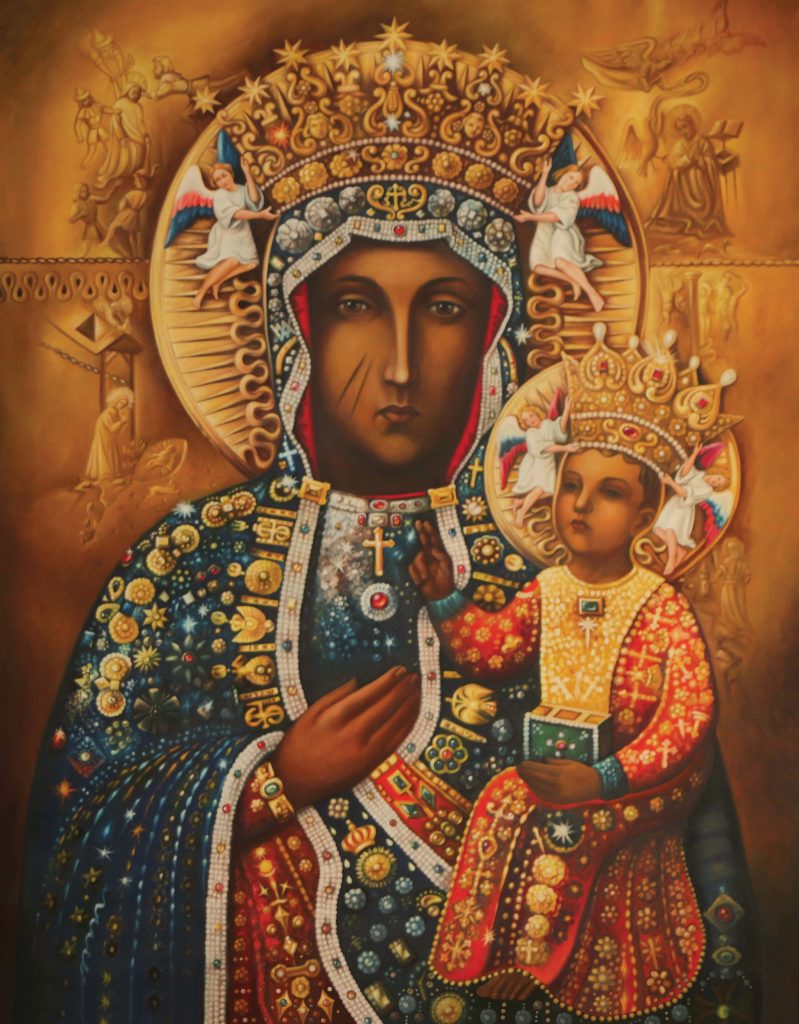
I was very close with my mother. I considered her to be one of my best friends. Her death was sudden. It was wrenching. It was excruciating. I came undone in my grief for many months.
Many people tried to offer comfort and wisdom. Most often the words they spoke felt trite and meaningless under the weight of my mourning. But there were some whose words sparked something in my heart. A new opening. One such gift of wisdom offered was an invitation in the midst of my loss to reimagine my relationship to my mother, and indeed “Mother” as an archetype. Since she was no longer on the physical, tangible plane, I could only reach out to her through the veil that separates us from our ancestors and the communion of saints.
I found myself crying out to Mother Mary in ways I had never done before. I had always admired Mary but retreated from the docile and pure images that churches promote of her. In my lament, I began to encounter a fiercer Mary, one who knew the weight of loss and how it strips away everything you thought you needed to navigate in the world. I discovered Mary, Mother of Sorrows, who could sit with me in my anguish and disorientation.
It was in these underworld days that I was introduced to the Black Madonna. Her image felt substantial enough to meet my pain. This dark mother knew the weight of her own son’s body in her arms.
Scattered across Europe and other continents is a series of medieval paintings and statues known as Black Madonnas who have dark or black features. Many are well-known pilgrimage shrines such as Our Lady of the Hermits in Einsiedeln, Switzerland; Our Lady of Jasna Góra in Częstochowa, Poland; and Our Lady of Montserrat, Spain.
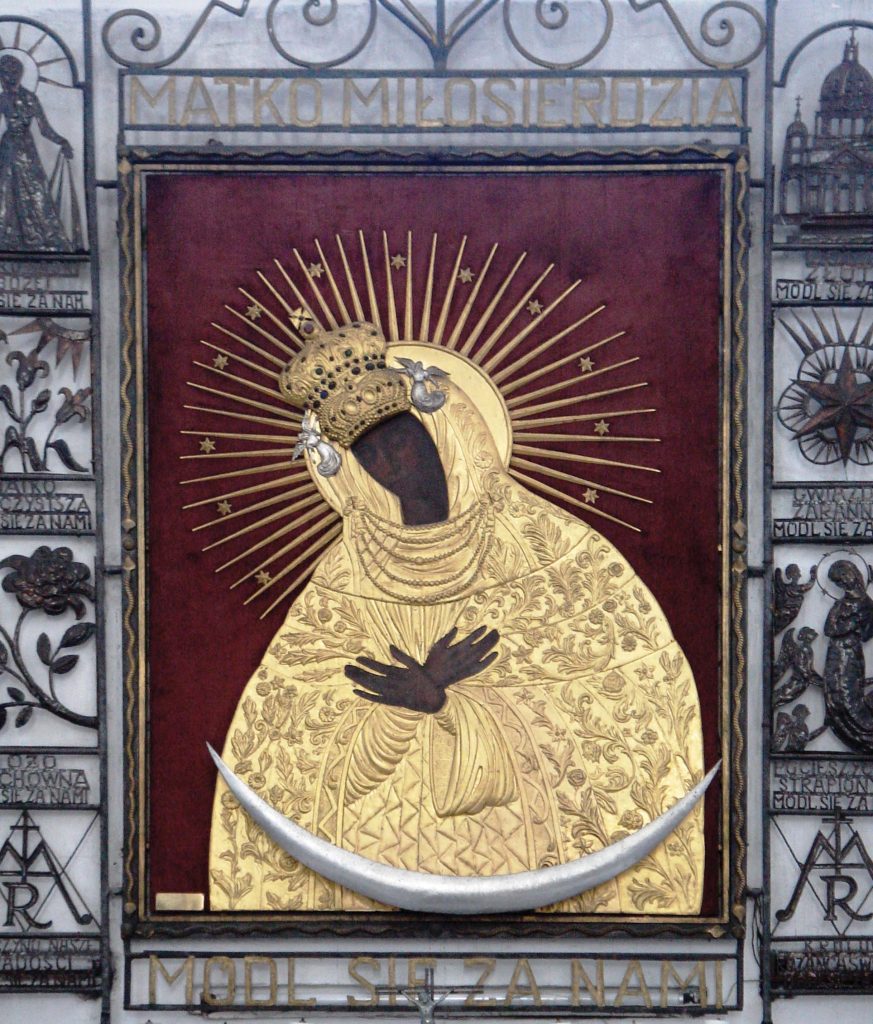
Christian feminist theology sees the Black Madonna as revealing aspects of the sacred feminine that are generally not represented in traditional images of Mary. These dark representations of our Lady expand Mary’s image beyond her usual depiction as a docile white woman. The Black Madonna roots Mary in the struggle of her Black and brown sisters for justice. Even more than a connection through skin color, the Black Madonna reveals a dimension of the sacred feminine as one who is able to stay present with us through our own times of holy darkness.
Mary in her beautiful blackness offers us a love in which she unequivocally claims that every oppressed person should be nourished, cherished, and welcomed. She compels us to act for justice out of this witness of expansive love.
There are many theories as to the origin of the Black Madonnas’ dark skin. One is that these images illustrate a text from the Song of Solomon that reads, “I am black and beautiful” (Song of Sol. 1:5). The Song of Solomon was a much-loved biblical text in the early medieval period when many of these images were created and a special devotion to Mary existed in monasteries.
In 2012 my husband, John, and I felt a call to move overseas to Vienna. This is the city where my father grew up and is now buried. It is a place I had visited many times as a child. Soon after we moved, a young Polish woman I had met through my ministry online was inspired to send me a card with the image of Our Lady of Częstochowa on it. I remember my heart quickening when I opened the envelope and found her waiting inside for me. I realized I was in the land of Black Madonnas now and could make a point of visiting some of them.
A few days after receiving that card, on Sunday at Mass there was an invitation to join a parish group making a pilgrimage for the day to Mariazell, or Our Lady of the Cell, a Black Madonna site in Austria within driving distance from Vienna. Encountering her opened another door within me to a deeper relationship with Mary. Mary of the Cell became my companion and guide during those early years of transition as we set out to create a new life across the ocean. She holds a pear in her hand, which reminds me of the sacred feminine and the way that sweetness and sustenance are offered to us freely.
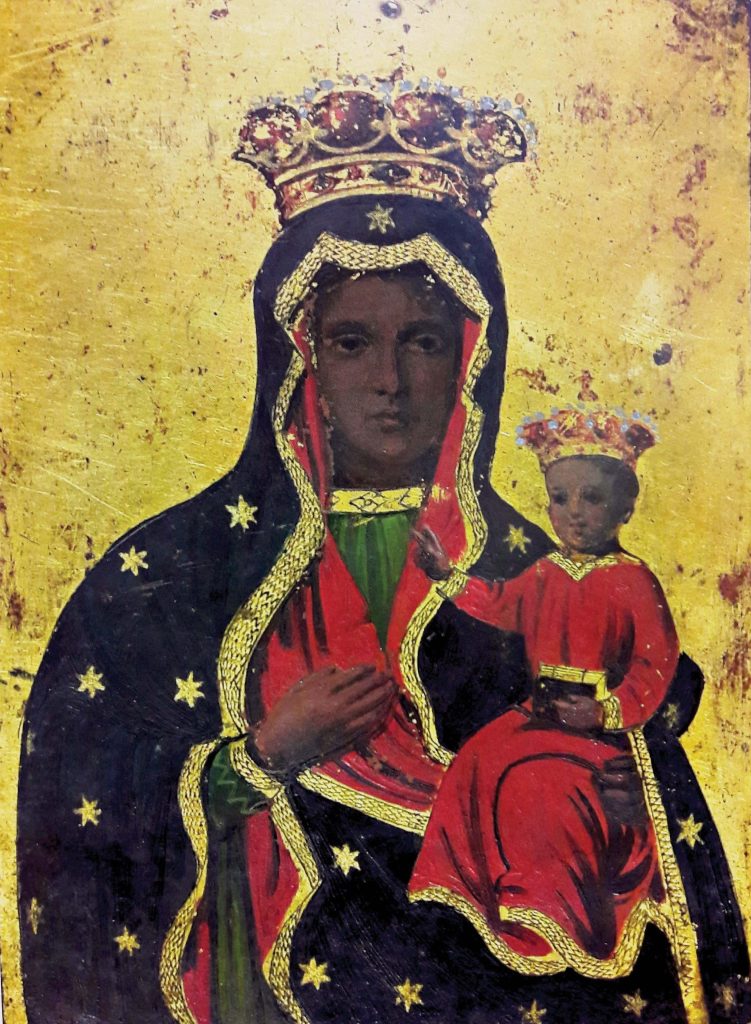
Seven years later I was invited by the Veriditas organization to lead a retreat at the Chartres Cathedral in France. Mary’s presence is keenly felt everywhere in that sacred space’s stunning stained glass windows and statues, but I felt most drawn to Mary who presides over the crypt, Notre Dame de Sous-Terre, or Our Lady of the Underworld. To enter, you have to descend a flight of stone stairs from street level on the north side of the cathedral. A dark Madonna and child carved from wood sit in a small chapel in the crypt where the parish holds Mass each day at midday.
The underworld is that place we explore when we are in a time of deep grief or have experienced any kind of loss that profoundly disorientates us. St. John of the Cross called it the dark night of the soul. Mary of the Underworld holds us when we are in that place of feeling undone by sorrow. She stays fully present when it feels like everything is falling apart.
The image of the women who sit at the foot of the cross, waiting in the midst of the terrible mystery of suffering and death, and face this evil in nonviolent ways is the image of sacred initiation of our egos being stripped of their securities and our growth into a much more mature and wiser way of being. When we pray to the Black Madonna in her fierce aspect, we pray for the strength to endure our own underworld journeys and not to avoid them.
We live in a culture afraid of the dark, where we illuminate our worlds 24/7 to the detriment of bird flight patterns and our own natural rhythms. When life forces us to descend into the canyon of grief, we try to distract ourselves with work instead of being fully present to this reality of the human journey.
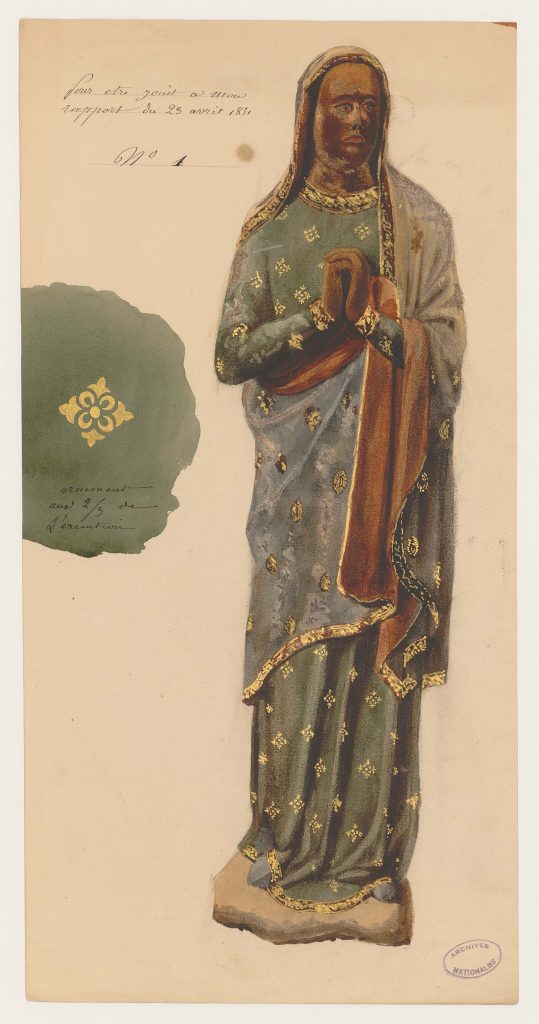
In their book Dancing in the Flames: The Dark Goddess in the Transformation of Consciousness (Shambhala), Jungian analysts Marion Woodman and Elinor Dickson write about this transformative journey when we willingly descend into the dark: “There must be a death to the ego self; there must be a transformation in which there is a letting go of all false values, of all things that the egotistical nature mistakenly clings to. . . . Once her cycles are accepted, those who love her are free of the fear of death, free of their own vulnerability, free to live her mystery.” Mary as the dark mother helps us embrace death as sister, as St. Francis of Assisi sang in his Canticle of Creation. This is part of the journey of our transformation, to not resist this call to surrender and to release that which no longer serves us.
We live in a time when we fear growing older. We are afraid of death. I remember several years ago working in spiritual direction with a woman who was dying of cancer. Her last mission was to convince the hospital that the “dying rooms” should be as beautiful and comfortable as the “birthing rooms” she had seen. This too is a sacred threshold. The underworld and the dark night of the soul are essential dimensions of any spiritual journey. Life has many ways of stripping away our securities and what we think is essential to us. Ultimately the dark night journey asks us to release ourselves fully into the darkness. If we keep trying to hold on to the light, we never allow ourselves to mine the rich gifts available to us in the fertile dark. Mary in her many dark faces is available to companion us in these challenging times. We do not make this journey alone.
This article also appears in the May 2022 issue of U.S. Catholic (Vol. 87, No. 5, pages 21-24). Click here to subscribe to the magazine.
Header Image: Black Madonna of Oropa, Wikimedia Commons


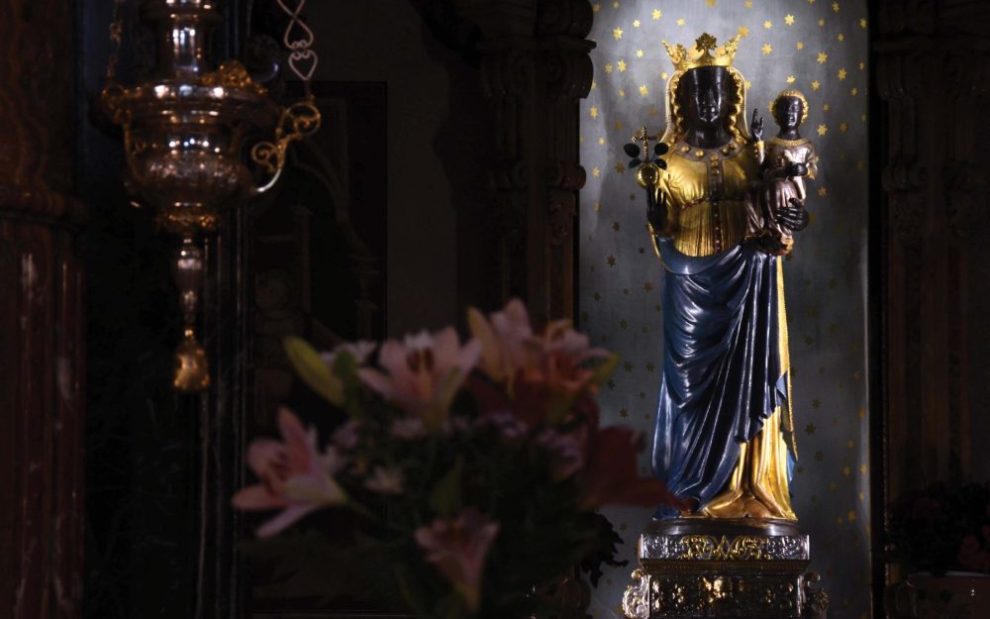












Add comment